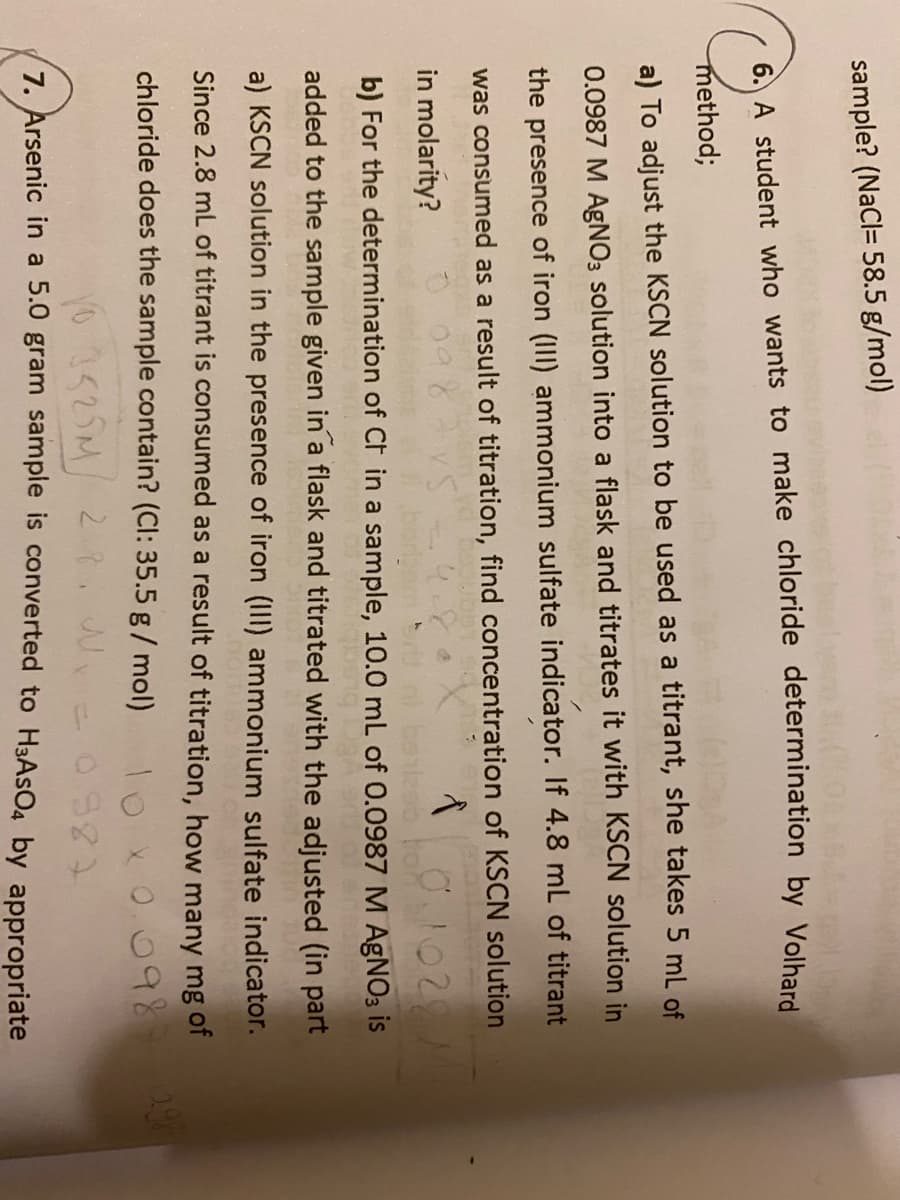6. A student who wants to make chloride determination by Volbard method; a) To adjust the KSCN solution to be used as a titrant, she takes 5 mL of 0.0987 M AGNO3 solution into a flask and titrates it with KSCN solution in the presence of iron (III) ammonium sulfate indicator. If 4.8 mL of titrant was consumed as a result of titration, find concentration of KSCN solution in molarity? b) For the determination of Ct in a sample, 10.0 mL of 0.0987 M AGNO3 is added to the sample given in a flask and titrated with the adjusted (in part a) KSCN solution in the presence of iron (II) ammonium sulfate indicator. Since 2.8 mL of titrant is consumed as a result of titration, how many mg of chloride does the sample contain? (Cl: 35.5 g/ mol) 1ox0.098 2
Ionic Equilibrium
Chemical equilibrium and ionic equilibrium are two major concepts in chemistry. Ionic equilibrium deals with the equilibrium involved in an ionization process while chemical equilibrium deals with the equilibrium during a chemical change. Ionic equilibrium is established between the ions and unionized species in a system. Understanding the concept of ionic equilibrium is very important to answer the questions related to certain chemical reactions in chemistry.
Arrhenius Acid
Arrhenius acid act as a good electrolyte as it dissociates to its respective ions in the aqueous solutions. Keeping it similar to the general acid properties, Arrhenius acid also neutralizes bases and turns litmus paper into red.
Bronsted Lowry Base In Inorganic Chemistry
Bronsted-Lowry base in inorganic chemistry is any chemical substance that can accept a proton from the other chemical substance it is reacting with.

Step by step
Solved in 2 steps with 1 images









